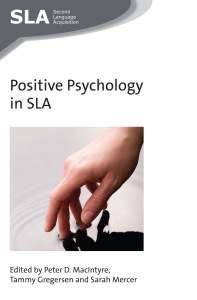In September we will be publishing Promoting Reflection on Language Learning edited by Neil Curry, Phoebe Lyon and Jo Mynard. In this post the editors give their five top tips for promoting reflection on language learning.
Who are we?
 This book’s editors and contributing authors are experienced language educators, and the context is a small, private university in Japan specialising in foreign languages. Some of us are learning advisors who have worked in the university’s large self-access learning centre (SALC), and others are language instructors who have taught at the English Language Institute (ELI).
This book’s editors and contributing authors are experienced language educators, and the context is a small, private university in Japan specialising in foreign languages. Some of us are learning advisors who have worked in the university’s large self-access learning centre (SALC), and others are language instructors who have taught at the English Language Institute (ELI).
What motivated us to write this book?
We have been collaborating for several years on a project promoting language learner autonomy inside and outside the classroom. As part of this project, we have been developing and trialling materials that encourage reflection on language learning and conducting research to evaluate the effectiveness of the process for our learners.
What is reflection on language learning?
On page 4, we define reflection on language learning as “the process of thinking deeply about one’s language learning to understand the processes to take informed and self-regulated action towards language outcomes.”
Why is reflection important?
Throughout the book, we argue that reflection is essential to language learning. Learners who engage in regular, systematic reflection are more aware of themselves and how they best learn. They are better equipped to take charge of the learning process and sustain motivation for learning.
What can educators do to promote reflection?
Each of the chapters disseminates research and practical applications to answer this question. In the conclusions, we summarise some of the key findings from the studies. Based on this, here are our five top tips for promoting reflection:
- Written prompts facilitate reflection.
Prompts help learners think differently, organise their thoughts and express their ideas. After a while, learners can even write their own prompts or ask each other reflective questions. Still, initially, they need the structure of prompts and reflective questions. Provide reflective questions to help learners to look back, look inwards, look forward and take action, for example:
- How did that activity go? What went well? What didn’t go so well?
- What did you learn from the activity? How did you feel as you did it?
- What would you change next time?
- What action will you take from today?
- Reflection can be done in written form, spoken form, and using visual or technological tools.
Experiment with different forms of reflection and ask students which ones they prefer. Have students keep records (e.g. logs, diaries, charts) of what they have learned to help them become more aware of their learning progress. Visual tools can help students express themselves deeply and creatively, even if they lack the language. Use technology tools creatively to help students keep track of their learning progress, write reflections, and interact with classmates and teachers/learning advisors.
- Students need training on why reflection is important and how to reflect.
To get started, give students some metalanguage, examples and a structure for expressing themselves and discussing their thoughts, goals and learning progress. Allocate time in class for longer (e.g. 30-minute) reflective activities to emphasise the importance of reflection and to encourage peer sharing. However, do not ‘overdo’ it. We recommend that these activities come at the end of a unit or every few weeks.
- Reflection is not ‘one-way’ but more effective if it is part of a dialogue.
Reflective dialogue helps students to organise their thoughts and think more deeply. If possible, talk to students one-to-one about their learning. Alternatively, respond to students’ written reflections to create a dialogue. Keep an open mind, and don’t judge or correct students’ reflections. Have students discuss their reflections with their classmates. Students value sharing their reflections with peers and giving and receiving encouragement and advice. Engaging in regular dialogues helps students stay motivated, connect with their teachers and classmates, and not feel so alone when learning a language.
- Reflection should be an integrated part of ongoing learning (i.e. not a ‘one-off’ activity).
Regularly embed short reflection questions into classroom tasks or have students keep a short reflective journal outside of class time so that it becomes a natural part of language learning. Encourage students to try to do the reflection tasks in the target language so they can express themselves while learning a language. However, do not correct any mistakes and allow students to express themselves in their L1 if they prefer. Ask students to keep their previous reflections for later discussion and comparison. Looking back at previous reflections helps learners to see how far they have come on their metacognitive journeys.
Jo Mynard, Neil Curry and Phoebe Lyon
For more information about this book please see our website.
If you found this interesting, you might also like Teacher Reflection edited by Zia Tajeddin and Atsuko Watanabe.











